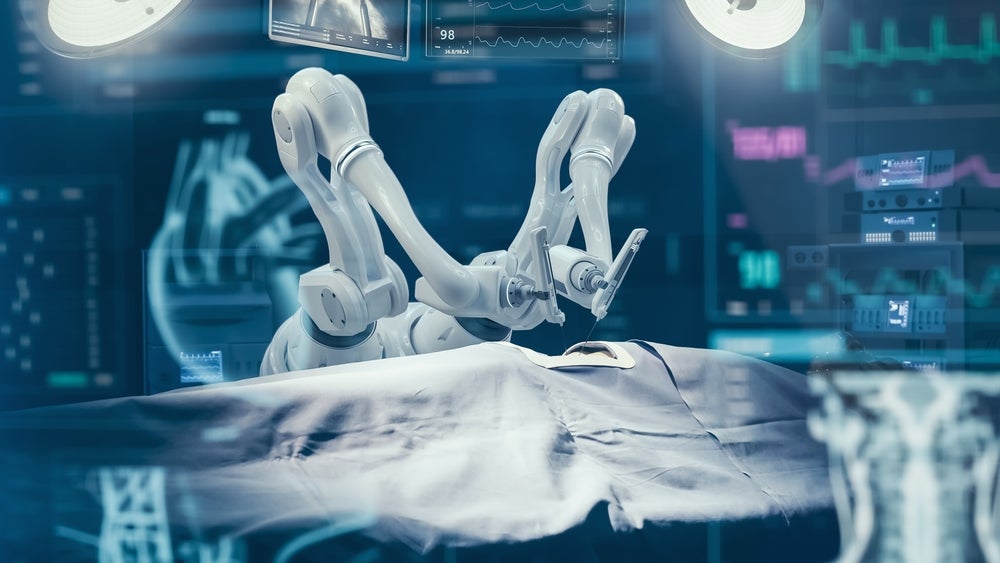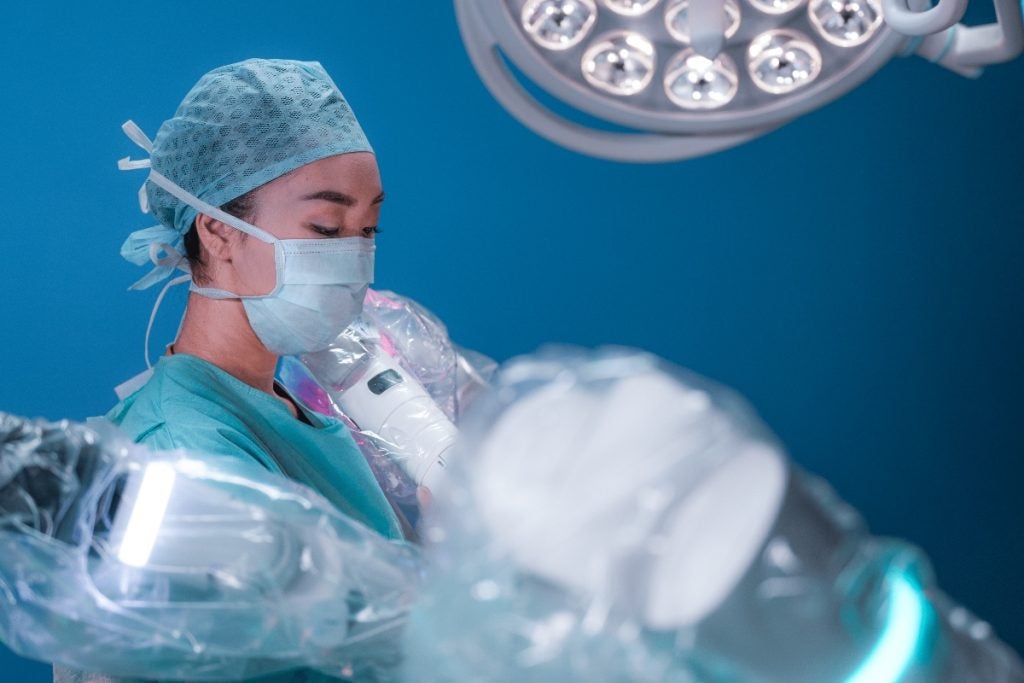
A new report by research and analysis company GlobalData states that surgical robotics will be widely adopted within healthcare and that “robotics will revolutionise the way medical care is delivered by 2035”.
With robots used in assisted surgery, ultrasound imaging, disinfection, emergency care, and cancer detection and treatment, GlobalData’s Future of Healthcare report predicts that the general surgery devices market will be worth $58m by 2033 with robotic surgery driving the medical robotics market.
The report notes: “Surgical robotics can increase surgical efficiency and outcomes. Robotic-assisted surgery allows for greater precision and can be less invasive, reducing the risk of complications.”
CMR Surgical is a British medical device company which created a robot-assisted surgery system called Versius to give patients access to minimal access surgery.
Mark Slack, chief medical officer and co-founder wants to deliver the best possible care to patients and says everything the company does must be rooted in science and evidence.
He says: “Versius, a small, modular surgical robot being used by surgeons to perform complex procedures is helping to deliver surgery to patients around the world. Introducing a surgical robot into the operating theatre provides surgeons and hospitals with a wealth of data and unique insights, to help drive and improve surgical outcomes.”
Challenges occur with the high cost of robotic medical devices and difficulty gaining regulatory approval.
In addition, malfunctions could have serious consequences for patients’ safety. There are questions which the GlobalData report highlights around liability and the risk of malpractice which falls on the robotic equipment manufacturer in most cases – but not always.

Another robotic application named in the report are sanitation and disinfection robots.
Xenex, the manufacturer behind the only FDA-authorised Microbial Reduction Robot for the healthcare environment has developed a robot to significantly reduce the number of pathogens that survive liquid chemical cleaning and stop pathogen transmission.
Dr Mark Stibich, co-founder and chief scientific officer at Xenex said: “Since Xenex was founded, our mission has been to enable our hospital customers to save lives and reduce suffering by destroying the deadly microorganisms that can cause infections. The COVID-19 pandemic raised awareness of how quickly diseases can spread.
“There are many important roles for robots within healthcare and we believe our robots’ ability to help hospitals provide a clean environment is a game-changer. Given the very real threat of antibiotic-resistant superbugs, hospitals need to do everything possible to eradicate germs within their facilities.”
Robotic exoskeletons, pharmaceutical robots and care robots are also named in the GlobalData report as positive medical applications that increase efficiency and enhance patient care with less associated risks than surgical robots.
The trend towards robotics within healthcare can be seen through regulatory activity from organisations such as the US Food and Drug Administration (FDA).
Last year, the FDA created a new medical device category, Whole Room Microbial Reduction Device, a medical device to be used to reduce microbial load on medical device surfaces following cleaning and disinfection.
This means that UV products intended to reduce microbial loads now require FDA authorisation before they can be marketed and distributed in the United States.
Outside of robotics, GlobalData’s report also explores 3D printing, preventive medicine, and digital therapeutics’ effect on the future of healthcare.







